Adding a set of custom wheels can add a lot of visual appeal to just about any vehicle. We’ve put together some recommendations to help you choose the right wheels for your car or truck, including aesthetics, safety, size, fit, and tech compatibility.
The style and finish on a set of custom rims can dramatically change the look of your car or truck. Start shopping right now or visit your local Les Schwab where you’ll find Wheel Discovery Centers. There, you can see specific sets of custom wheels on the make, model, year, and color of your vehicle. This is a great way to sift through the many options and narrow your choices before making a commitment.
Proper fit is crucial when choosing custom wheels. The pros at Les Schwab will help you look at three vital areas before choosing your set of wheels.
Overall Diameter: The wheel and tire combination should always clear the braking components, suspension parts, and the body of the vehicle. This is important whether you want to increase the diameter of your wheels for a street-worthy look, or decrease the wheel diameter for more tire sidewall and better off-road performance.
Offset and Backspace: To ensure proper clearance, it’s critical to know how far inside and outside the entire wheel and tire package will sit in the wheel well. Improper backspace or offset can cause interference with things like the body and steering components, and possibly decrease your turning radius.
Learn more about offset and backspace.
Proper Mounting: Many of today’s vehicles come from the factory with wheels that fit precisely around the hub. This is referred to as hub-centric fitment, which helps provide a consistent centering of the wheel and tire assembly when mounted to the vehicle. This reduces the chance of an imbalance that may result in a vibration in the steering wheel or seat while driving. Our team understands the importance of maintaining a hub-centric fit whenever aftermarket wheels are being considered.
Our team understands the importance of maintaining a hub-centric fit whenever aftermarket wheels are being considered.
There are many sizes to consider when purchasing new wheels. The image below is an example of how plus and minus sizing works. Plus sizing boosts the diameter of your wheels while decreasing the profile of the tire sidewall to match the overall tire diameter suggested by the manufacturer. Minus sizing works in the opposite way to allow for a taller sidewall.
Here’s a comparison of how two wheel-tire packages of different sizes look on the same vehicle.
Car with 18-inch wheels. Note the higher tire sidewall.
Car with 20-inch, plus-sized wheel and low-profile tire. Note the shorter tire sidewall.
There are a variety of bolt patterns and your new custom wheels must match in order to fit your vehicle properly. Even if your vehicle has five lugs, there’s no guarantee that every five-hole wheel will fit. At Les Schwab, we stock thousands of custom wheels and can help you find the right bolt pattern and fit for your vehicle.
At Les Schwab, we stock thousands of custom wheels and can help you find the right bolt pattern and fit for your vehicle.
TPMS (Tire Pressure Monitoring System) compatibility is also important. Equipped in most new vehicles, the TPMS in your vehicle should be reset after installing new wheels. At Les Schwab, we take care of that for you.
Keep in mind, that your options will be specific to the make and model of what you drive. Our team of pros understands what wheel and tire sizes will fit your vehicle and meet your performance expectations. Stop by today and to check out your options. With every custom wheel sale, Les Schwab will give you a free, written warranty good at any of our locations. This gives you peace of mind as you roll away on your new custom wheels.
SHOP WHEELS
Wheels, they get us moving, keep us on the road, and for some, stand as a symbol of status and pride.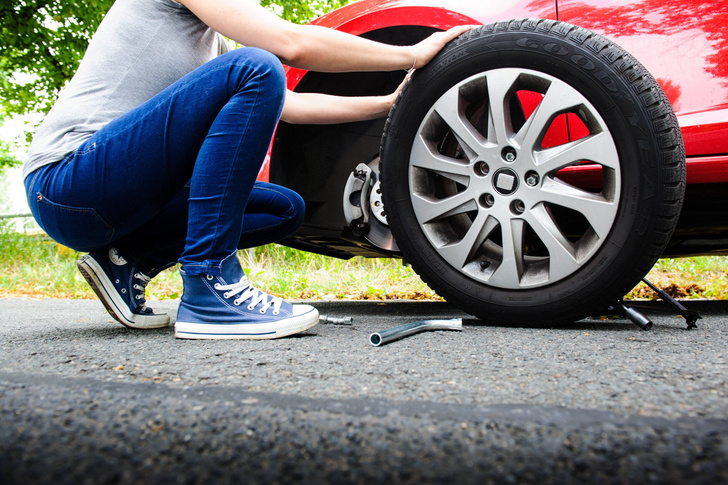
You don’t have to be a fan of The Fast and the Furious franchise to be tempted into a bigger wheel option. After all, manufacturers themselves reserve the big rims for higher-end variants, or charge you more for a little extra rolling metal.
If you are thinking of up-sizing or changing the wheels on your car to something better looking, you need to keep a few things in mind. A wheel might be a simple round metal hoop to fit the tyres on, but it has as much effect on your car’s handling, ride comfort, and safety, as the rubber wrapped around it.
Mark Skaife demonstrates the difference between genuine and replica wheels for the Genuine Is Best initiative.
Shopping for an aftermarket wheel can be a daunting experience with numerous makes, models, and specifications to choose from. So, you're spoiled for choice, but don’t be tempted by cheap wheels available online.
It can't be stressed enough how risky it is to fit cheap wheels, as they often don’t meet Australian standards for aftermarket parts (known as Australian Design Rules, or ADRs). Though they might look similar to those made by reputable brands, these imitations usually aren’t tested for quality or strength, which is important as wheels are meant to handle a lot of abuse.
Though they might look similar to those made by reputable brands, these imitations usually aren’t tested for quality or strength, which is important as wheels are meant to handle a lot of abuse.
“Replica” wheels could place you at risk of an accident if you were to drive into a pothole or hit debris on the road at speed. Unlike a tyre puncture which can happen gradually, allowing you time to manoeuvre your car to safety, a shattering wheel is far more sudden and uncontrollable.
Thankfully, we have comprehensive Australian Consumer Law and strict Australian Standards for such products, and those standards are very similar to European (TUV) and Japanese (JWL) standards – which is where many name-brand wheels are manufactured, even for car companies!
You are almost guaranteed to buy quality wheels from the official Australian distributors of name-brand wheels, so have a hunt around on Google to find the official stockists of the brands of wheels you’re looking at.
When it comes to wheels and tyres, it is best not to skimp and buy from a licenced distributor for the proper, standards-approved name-brand wheels.
Do you know the lug nut layout on your car?
Fitting on a wheel isn’t quite like fitting on a shoe, you can’t just pick the look you like with the size that fits you. The mounting point on a wheel hub can differ between manufacturers. Not only do some cars have five, four, or even three lugs, to mount the wheel on, but the diameter of the arrangement of studs varies between models. This is what is known as its stud pattern (or Pitch Circle Diameter, PCD).
The stud pattern of wheels are usually listed in a vehicle's owner’s manual, or can be found engraved onto some wheels. It is usually found in the numerical arrangement of 5/114, or 5x114. The first number corresponds to the number of mounting holes it has, (in this case is 5), while the second number denotes the distance between the centre of said holes (114mm). These numbers matter, as getting a wheel with a different stud pattern means it won’t fit onto your car’s wheel hub.
Changing wheel size without also considering tyre size can affect your speedometer.
Most people are aware that changing the size of your car’s wheels or tyres will affect its ride and handling characteristics, though many don’t realise that if these changes are done incorrectly they can mess with your speedometer and odometer readings. This is called “rolling diameter”, which relates to the overall height of the wheel and tyre, and the distance it travels.
Many speedometers and odometers use the rotation of the wheels to determine how fast, and far, the car is travelling. The figures you get on your car’s dashboard are assuming the circumference of your tyre aligns with the manufacturer’s original specifications.
If you were to use the same profile tyre on a larger wheel, your car’s tyre will have a larger diameter and circumference, which would affect your car’s speedometer and odometer readings as the overall height of the wheel/tyre combo has been enlarged.
The larger the diameter of the tyre, relative to the original, the lower the speedometer reading, since a single rotation at the transmission is now covering a longer distance with the tyre’s larger circumference.
This means you would be unintentionally breaking speed limits. Try explaining the complexities of such mechanical movements to the police. Likewise, with a larger than specified circumference your car’s odometer would be reading less mileage than it is actually covering, which would make it hard to keep track of actual servicing intervals.
Manufacturers often supply different wheel sizes across their model range, but they do ensure the diameter and circumference of the fitted tyre are similar across its variants, by fitting a tyre with the appropriate profile.
State laws limit owners from up-sizing their car’s tyres too much, and each state’s rules are different so you should check with the transport department in your state as to what the rules are for modifying the wheels and tyres on your car.
Tyre size offerings for your car are usually listed on the tyre information panel, which is attached to your door sill. As a guide, the limit to the wheel size you can fit to your car is usually the largest wheel option available for your particular model from the manufacturer. If you are ambitious, up-sizing it by an inch more than the largest wheel option, is still reasonable.
Confused by all this? Worry not, as there are plenty of websites and apps on the internet designed to help you calculate the right profile tyre to suit your new wheels.
There is such a thing as too big (image credit: Harris publications.)
The reason most people give when buying an aftermarket wheel is that they would like something bigger to give their car a sportier look and improve handling. However, while big wheels look good, remember the bigger the wheel the bigger the compromise in terms of ride comfort, and safety.
The bigger a wheel and tyre combination gets, the heavier they are. This weighs down your suspension, leading to rougher ride and (in extreme cases) a situation where the wheel will follow ruts in the road, possibly pulling the steering wheel out of your hands.
Check the weight of wheels you’re looking at buying against what the factory wheel weighs. While a couple of kilos doesn’t sound like much, it has a huge effect on handling, so try and keep the weight down as far as possible.
Increasing a car’s wheel diameter also requires a lower profile tyre, as we mentioned in #3. The height of the tyre is known as the “sidewall” and the thinner that is, the less cushioning effect you get from the tyre.
With less rubber between the wheel and the road to absorb shocks your wheel is also at a greater risk of damage from potholes and debris.
Tyre stretch can be dangerous and illegal. (image credit: superstreetonline.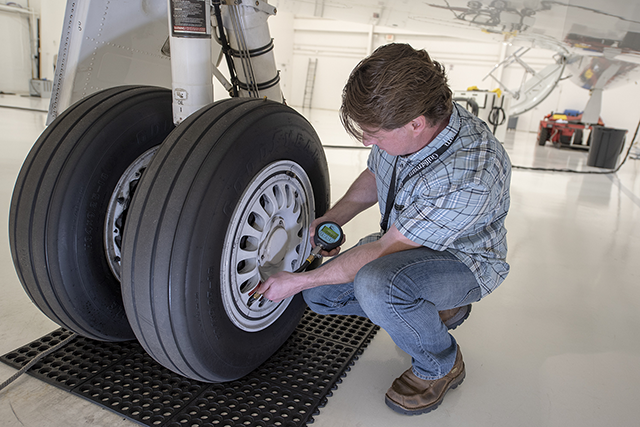 )
)
Fitting larger diameter wheels normally also involves slightly increasing the width of the wheel and tyre. Car enthusiasts refer to this as the “two-plus-one” rule, meaning if you go up a maximum of two-inches in diameter, you only go a maximum of one-inch wider.
One recent trend with certain car enthusiasts is fitting extremely wide wheels, wrapped with tyres that are smaller than the wheel manufacturer recommends, so the wheel fits on the car. Taken to extreme levels this isn’t safe, or legal.
It is dangerous to stretch a tyre onto wheels far wider than it was designed to fit, as the tyres’ sidewalls are load bearing structures that have been designed to work at a 90-degree alignment to the wheel.
Stretching a tyre pulls this out, sometimes to under 45-degrees, which compromises structural strength and runs the risk of the tyre popping off the wheel, causing a sudden blow-out.
Deep dish rims are extreme examples of offset (image credit: zcarblog)
A wheel’s offset relates to the distance between the wheel’s mounting hub and centreline.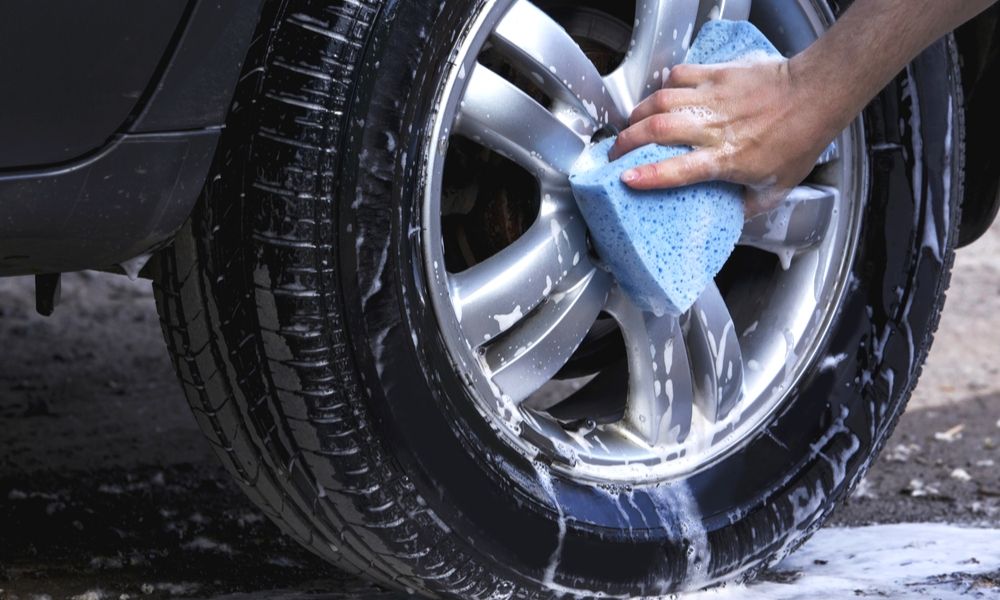 If the face of the mounting hub sits behind the centreline (so the mounting hub sits “inside” the barrel of the wheel), that means the wheel has a negative offset, whereas if it sits ahead of the centreline (meaning the mounting hub is further out towards the edge of the car), it has a positive offset.
If the face of the mounting hub sits behind the centreline (so the mounting hub sits “inside” the barrel of the wheel), that means the wheel has a negative offset, whereas if it sits ahead of the centreline (meaning the mounting hub is further out towards the edge of the car), it has a positive offset.
Offset is measured by 'ET' (from the German word Einpresstiefe, translated as 'insertion depth'). The higher the “ET number”, the more positive the offset is from the wheel’s centreline, while a negative number translates to negative offset.
Why is offset important? Offset changes affect the look of a wheel, but it also affects the way the suspension reacts to movements from the wheel.
Since the suspension assembly is attached to the wheel’s mounting hub, the angle and forces transmitted from the wheel to the suspension components are slightly different. This in turn could affect the car’s steering response and characteristics if the wheel offset has been changed significantly.
Some wheels will also not fit on a particular car as that wheel’s offset pushes the wheel into the suspension, or mounts it too close to clear the bodywork. There are plenty of calculators online to help work out what offset your car needs, and any reputable wheel shop will be able to advise what offset your car will need, when changing wheel or tyre size.
When you need to buy a new set of wheels, the question - which tire fits which rim - becomes one of the most relevant among motorists. Someone wants to slightly tune the car by choosing non-standard wheels, someone wants to improve the driving performance of the car or just choose the right option.
When choosing new tires for rims, you can always choose the simplest, but generally correct way - use a tire calculator or contact a specialist from a tire store. Although the task is not as difficult as it seems at first glance.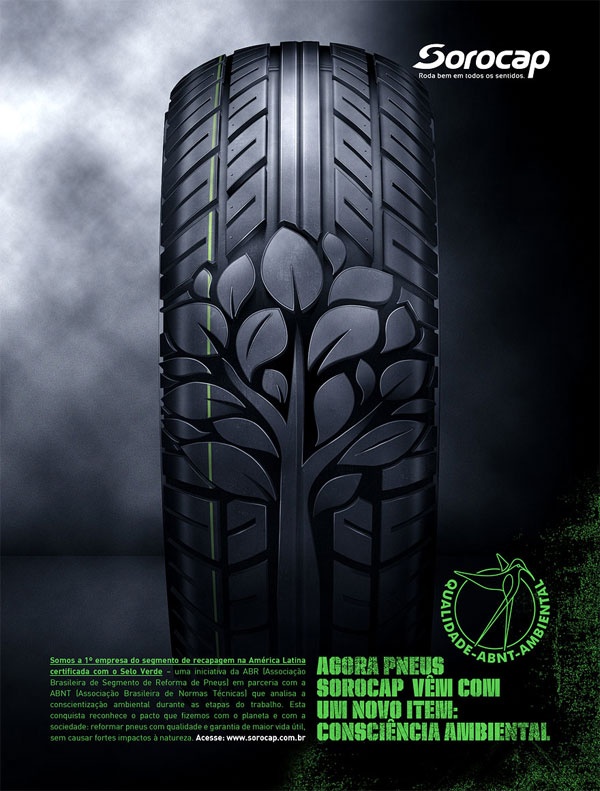 We will analyze in more detail about the correspondence between the size of tires and wheels, and how to choose the right size for car tires.
We will analyze in more detail about the correspondence between the size of tires and wheels, and how to choose the right size for car tires.
Regardless of whether you choose summer or winter tires, the fundamental rule for an accurate choice is the correspondence between the technical parameters of the tire and the wheel.
Disks have several main characteristics - these are the diameter and width of the disk, the diameter of the central hole for the hub, the offset, the number of mounting bolts and the diameter of the circle of the centers of the holes for the fasteners.
Of all the parameters, the size of a tire is fundamentally affected by two characteristics - these are:
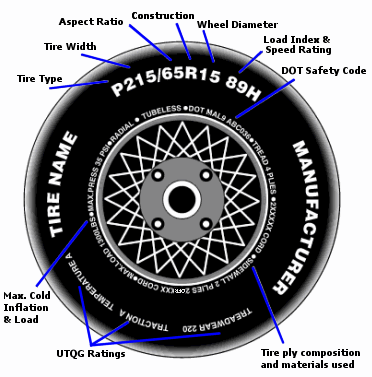 Also indicated in inches. The value of this parameter must match the tire width.
Also indicated in inches. The value of this parameter must match the tire width. It is difficult to miscalculate with the diameter: it is impossible to install rubber with a 15-inch bore on R16 wheels. But to make a mistake with the width is quite likely, and this will instantly affect the driving performance of the car and other characteristics.
However, the same applies to the profile height ratio. This parameter does not affect the selection of tires so much, but too low a profile loads the suspension, which accelerates the wear of the structural elements of the chassis + reduces the ride comfort on poor quality roads. Too high a profile will touch the wheel arches and fender liner, and this is already increased wear of the rubber itself.
Too high a profile will touch the wheel arches and fender liner, and this is already increased wear of the rubber itself.
In order to correctly select the ratio of "wheel + tire" - it is necessary to match the width of the rim to the width of the tread profile. If the tires are purchased for the original (regular) set of disks, it is enough to look at the factory characteristics of the disk, most often located on its inner side. The marking is standard for both cast and steel wheels, and contains three main values: diameter, width and offset (for example: J6 × 16 ET52, where 6 is the width of the wheel rim in inches, 16 is the outer diameter of the wheel, and ET52 - departure). Instead of the designation ET, the inscription OFFSET or DEPORT may come across - it all depends on the country of manufacture of the car.
What do these parameters give? The two main characteristics are:
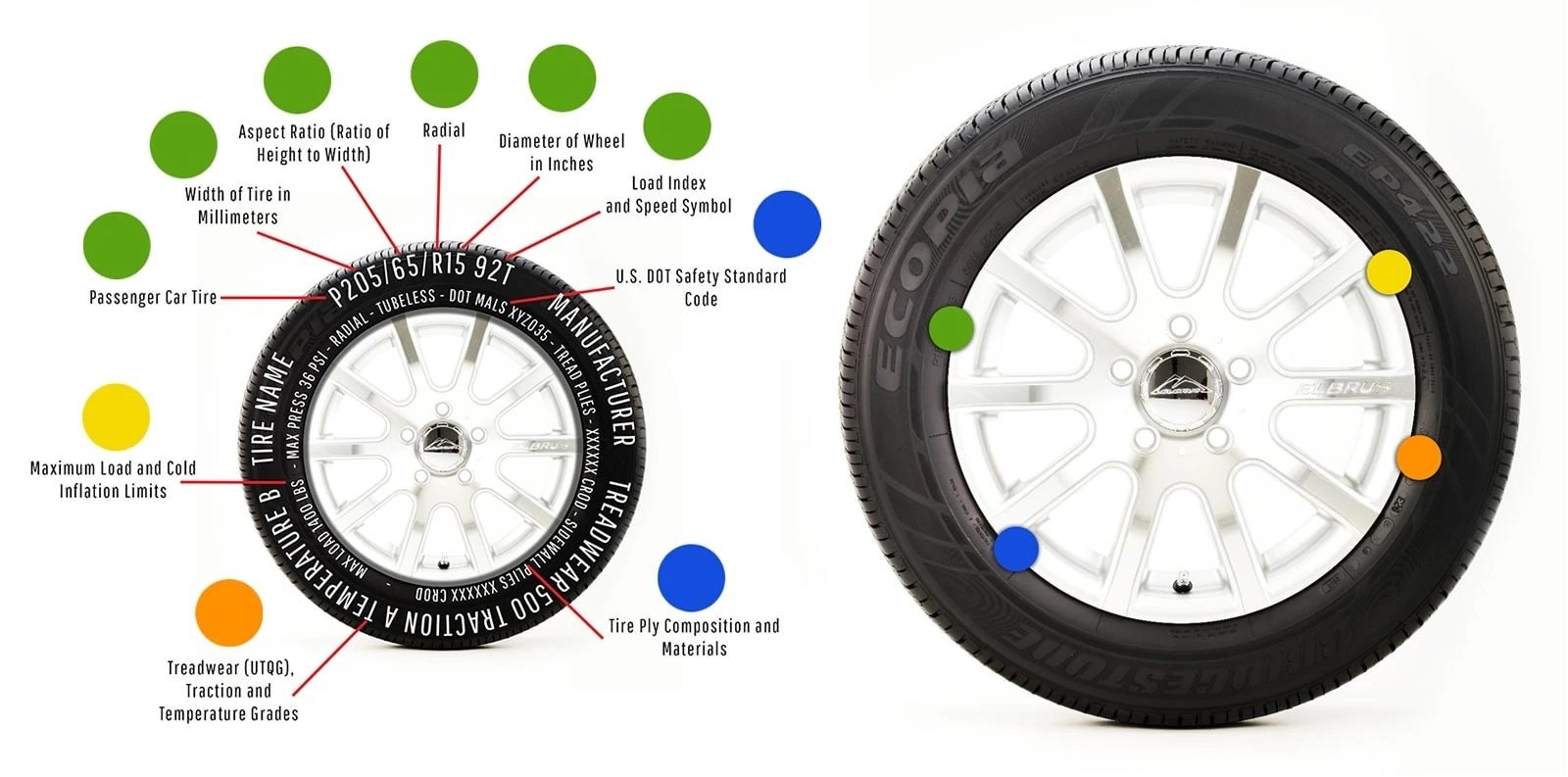
In particular, we will analyze the question - what tires are suitable for 16 rims?
When choosing the diameter of a tire, there is a direct relationship between dimensions, that is, the outer diameter of the disk and the landing diameter of the tire must have the same value - and in the marking this indicator is indicated as R16.
Next, you need to select the tire tread width.
The first rule to understand is that the width of the tire should not, but can be 25% more than the width of the wheel rim. This is due to the fact that automotive rubber, due to the composition of the rubber mixture, has high elasticity, and with a difference of 25%, it “sits” on the wheel much denser than if the width of the rim and tread had a direct relationship between dimensions, that is, the same indicators.
However, the width of the rim is indicated in inches, and the width of the tire profile in cm, for example: the width of an R16 rim in inches can vary from 5. 5 to 9 inches (this figure should be found on the inside of the rim). Thus, to determine the nominal value of the tread width, the rim width parameter in inches must be converted to cm. you need 6 × 25.4 = 152.4 cm - this is the nominal value of the width of the rim of your wheel.
5 to 9 inches (this figure should be found on the inside of the rim). Thus, to determine the nominal value of the tread width, the rim width parameter in inches must be converted to cm. you need 6 × 25.4 = 152.4 cm - this is the nominal value of the width of the rim of your wheel.
If you need to determine which tire size fits which wheels, then in the calculation you need to start from the tread width. In particular, with a tire profile width of 225 cm, this figure must be divided by 25. 4 mm (1 inch) - we get a value of 8.85 inches. 25% must be deducted from the resulting figure (admissible increase for tread width). With a simple calculation, the resulting figure for the rim width is 6.63 - round up to 7 and get the allowable rim width (J7) for a tire with a tread of 225 cm.
4 mm (1 inch) - we get a value of 8.85 inches. 25% must be deducted from the resulting figure (admissible increase for tread width). With a simple calculation, the resulting figure for the rim width is 6.63 - round up to 7 and get the allowable rim width (J7) for a tire with a tread of 225 cm.
This calculation is suitable for any type of road transport (compacts, SUVs, commercial and trucks): using this method, you can correctly calculate the tire width for 17, 18, 19 inch wheels and also pick up tires for 13 inch wheels. If you are afraid of making a mistake in the calculation, you can use the rubber-to-rim ratio table or, as mentioned at the very beginning, select the parameters online using the visual tire and wheel compatibility calculator.
The issue of selecting tires for disks has always been relevant for motorists, since every self-respecting driver needs to know certain parameters. If the characteristics are not known and these parameters are not followed, the car will experience a significant deterioration in performance, which seriously threatens safety.
If the characteristics are not known and these parameters are not followed, the car will experience a significant deterioration in performance, which seriously threatens safety.
In order to match tires to the wheels as accurately as possible, you should first study the marking of the wheels:
Wheel marking with dimensions R13 4x98 ET35 J5 D58.6
It is the latter that has a major role in matching tires and wheels. In order to choose the right wheels for tires on passenger cars, you can use the table compiled by the specialists of Avtotire Kom. Or you can use the selection of wheels for the car by clicking on the link .
Tire/Rim Matching Chart
| Disc diameter | Tire size | Wheel rim width (inches) | ||
| Minimum | Recommended | Maximum | ||
| 13" | 135/80R13 | 3.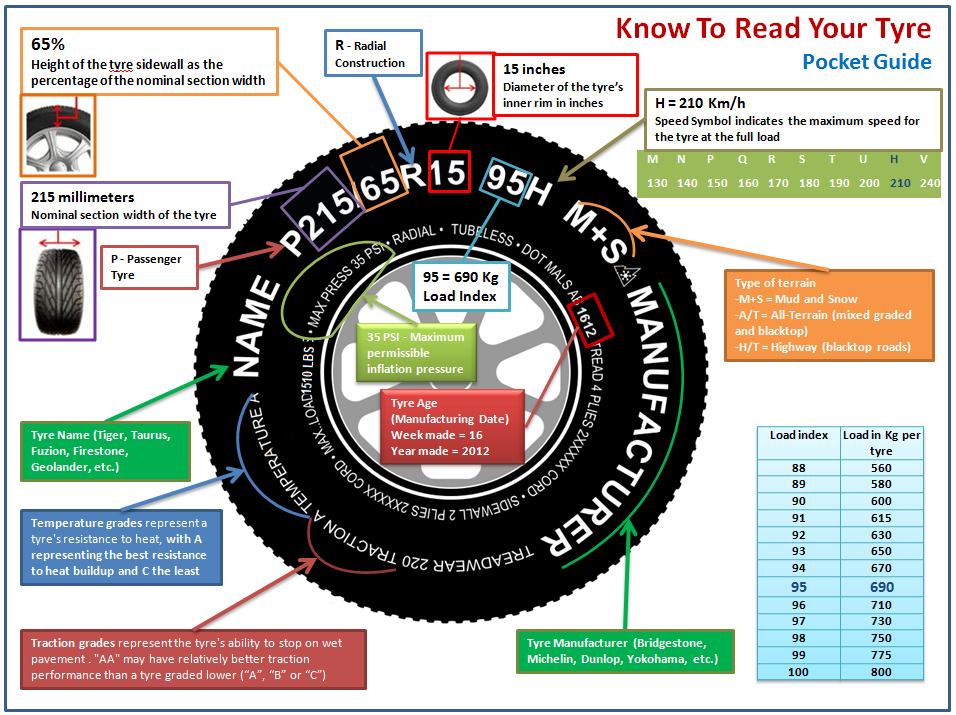 5 5 | 3.5 | 4.5 |
| 145/80R13 | 3.5 | 4 | 5 | |
| 155/80R13 | 3 | 4.5 | 5 | |
| 165/80R13 | 4 | 4.5 | 5.5 | |
| 165R13 | 4.5 | 5 | 6 | |
| 14" | 175/80R14 | 4.5 | 5 | 6 |
| 185/80R14 | 4.5 | 5 | 6 | |
| 13" | 135/70R13 | 3.5 | 4 | 4.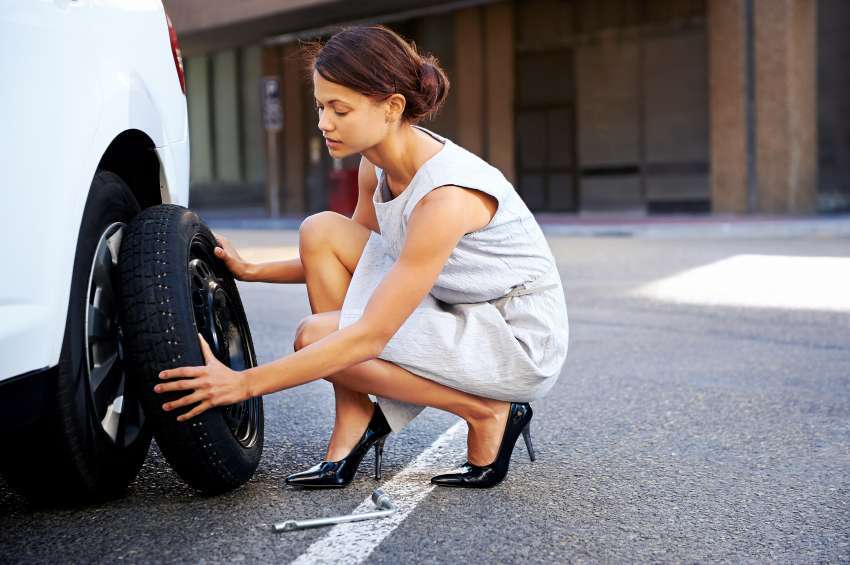 5 5 |
| 145/70R13 | 3.5 | 4.5 | 5 | |
| 155/70R13 | 4 | 4.5 | 5 | |
| 165/70R13 | 4 | 5 | 5.5 | |
| 175/70R13 | 4.5 | 5 | 6 | |
| 185/70R13 | 4.5 | 5.5 | 6 | |
| 14" | 165/70R14 | 4 | 5 | 5.5 |
| 175/70R14 | 4.5 | 5 | 6 | |
| 185/70R14 | 4. 5 5 | 5.5 | 6 | |
| 195/70R14 | 5 | 6 | 6.5 | |
| 13" | 155/65R13 | 4.5 | 4.5 | 5.5 |
| 165/65R13 | 4.5 | 5 | 6 | |
| 175/65R13 | 5 | 5 | 6 | |
| 14" | 155/65R14 | 4.5 | 4.5 | 5.5 |
| 165/65R14 | 4.5 | 5 | 6 | |
| 175/65R14 | 5 | 5 | 6 | |
| 185/65R14 | 5 | 5. 5 5 | 6.5 | |
| 195/65R14 | 5.5 | 6 | 7 | |
| 15" | 145/65R15 | 4 | 4.5 | 5 |
| 155/65R15 | 4.5 | 4.5 | 5 | |
| 165/65R15 | 4.5 | 5 | 6 | |
| 175/65R15 | 5 | 5 | 6 | |
| 185/65R15 | 5 | 5.5 | 6.5 | |
| 195/65R15 | 5.5 | 6 | 7 | |
| 205/65R15 | 5.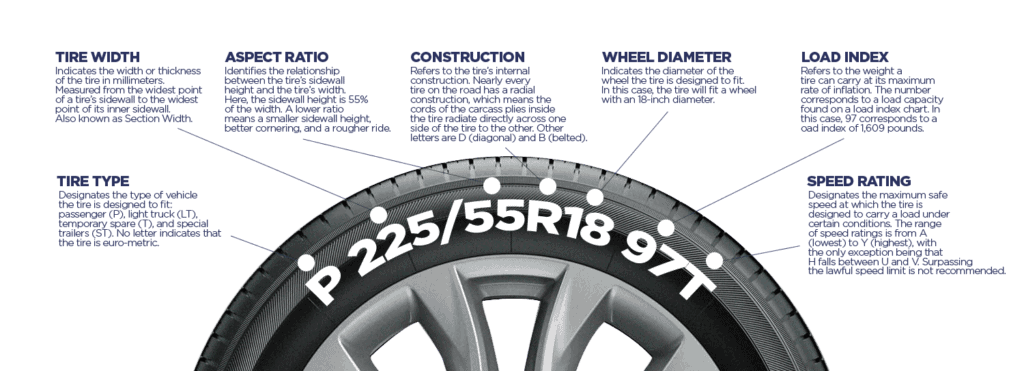 5 5 | 6 | 7.5 | |
| 215/65R15 | 6 | 6.5 | 7.5 | |
| 16" | 215/65R16 | 6 | 6.5 | 7.5 |
| 17" | 235/65R17 | 6.5 | 7 | 8.5 |
| 18" | 235/65R18 | 6.5 | 7 | 8.5 |
| 14" | 165/60R14 | 4.5 | 5 | 6 |
| 175/60R14 | 5 | 5 | 6 | |
| 185/60R14 | 5 | 5.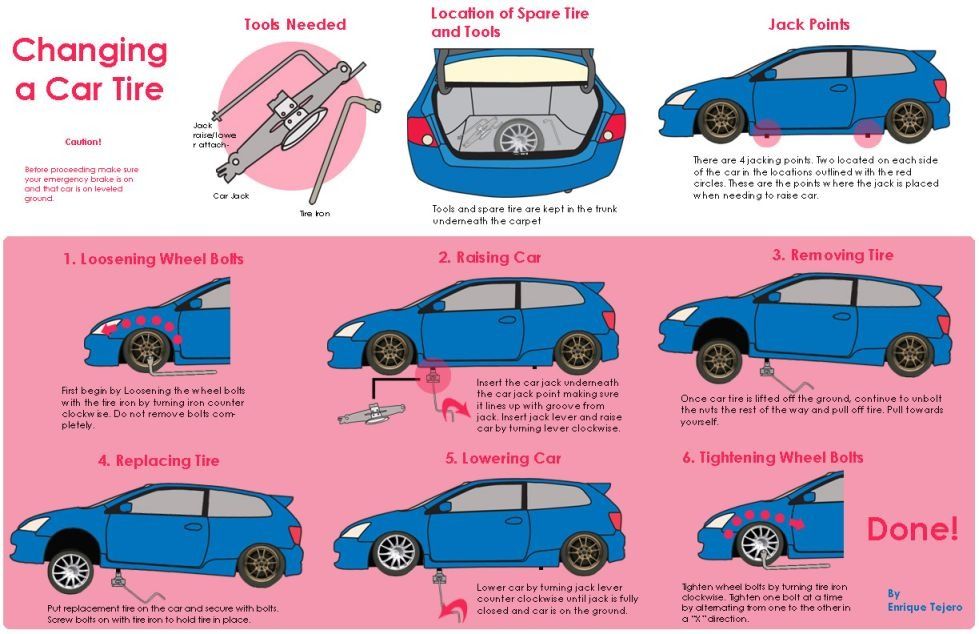 5 5 | 6.5 | |
| 195/60R14 | 5.5 | 6 | 7 | |
| 15" | 175/60R15 | 5 | 5 | 6 |
| 185/60R15 | 5 | 5.5 | 6.5 | |
| 195/60R15 | 5.5 | 6 | 7 | |
| 205/60R15 | 5.5 | 6 | 7.5 | |
| 225/60R15 | 6 | 6.5 | 8 | |
| 16" | 205/60R16 | 5.5 | 6 | 7. |
| 215/60R16 | 6 | 6.5 | 7.5 | |
| 225/60R16 | 6 | 6.5 | 8 | |
| 235/60R16 | 6.5 | 7 | 8.5 | |
| 17" | 225/60R17 | 6 | 6.5 | 8 |
| 14" | 185/55R14 | 5 | 6 | 6.5 |
| 15" | 175/55R15 | 5 | 5.5 | 6 |
| 185/55R15 | 5 | 6 | 6. | |
| 195/55R15 | 5.5 | 6 | 7 | |
| 205/55R15 | 5.5 | 6.5 | 7.5 | |
| 225/55R15 | 6 | 7 | 8 | |
| 16" | 195/55R16 | 5.5 | 6 | 7 |
| 205/55R16 | 5.5 | 6.5 | 7.5 | |
| 215/55R16 | 6 | 7 | 7.5 | |
| 225/55R16 | 6 | 7 | 8 | |
| 245/55R16 | 7 | 7. | 8.5 | |
| 17" | 205/55R17 | 5.5 | 6.5 | 7.5 |
| 215/55R17 | 6 | 7 | 7.5 | |
| 225/55R17 | 6 | 7 | 8 | |
| 235/55R17 | 6.5 | 7.5 | 8.5 | |
| 245/55R17 | 7 | 7.5 | 8.5 | |
| 255/55R17 | 7 | 8 | 9 | |
| 15" | 195/50R15 | 5.5 | 6 | 7 |
| 205/50R15 | 5. | 6.5 | 7.5 | |
| 225/50R15 | 6 | 7 | 8 | |
| 16" | 185/50R16 | 5 | 6 | 6.5 |
| 195/50R16 | 5.5 | 6 | 7 | |
| 205/50R16 | 5.5 | 6.5 | 7.5 | |
| 215/50R16 | 6 | 7 | 7.5 | |
| 225/50R16 | 6 | 7 | 8 | |
| 235/50R16 | 6.5 | 7.5 | 8.5 | |
| 245/50R16 | 7 | 7. | 8.5 | |
| 255/50R16 | 7 | 8 | 9 | |
| 17" | 205/50R17 | 5.5 | 6.5 | 7.5 |
| 215/50R17 | 6 | 7 | 7.5 | |
| 225/50R17 | 6 | 7 | 8 | |
| 235/50R17 | 6.5 | 7.5 | 8.5 | |
| 18" | 235/50R18 | 6.5 | 7.5 | 8.5 |
| 245/50R18 | 7 | 7.5 | 8. | |
| 19" | 275/50R19 | 7.5 | 8.5 | 9.5 |
| 15" | 195/45R15 | 6 | 6.5 | 7.5 |
| 16" | 195/45R16 | 6 | 6.5 | 7.5 |
| 205/45R16 | 6.5 | 7 | 7.5 | |
| 215/45R16 | 7 | 7 | 8 | |
| 225/45R16 | 7 | 7.5 | 8.5 | |
| 245/45R16 | 7. | 8 | 9 | |
| 17" | 205/45R17 | 6.5 | 7 | 7.5 |
| 215/45R17 | 7 | 7 | 8 | |
| 225/45R17 | 7 | 7.5 | 8.5 | |
| 235/45R17 | 7.5 | 8 | 9 | |
| 245/45R17 | 7.5 | 8 | 9 | |
| 255/45R17 | 8 | 8.5 | 9.5 | |
| 18" | 215/45R18 | 7 | 7 | 8 |
| 225/45R18 | 7 | 7. | 8.5 | |
| 235/45R18 | 7.5 | 8 | 9 | |
| 245/45R18 | 7.5 | 8 | 9 | |
| 255/45R18 | 8 | 8.5 | 9.5 | |
| 275/45R18 | 8.5 | 9 | 10.5 | |
| 19" | 245/45R19 | 7.5 | 8 | 9 |
| 20" | 275/45R20 | 8.5 | 9 | 10.5 |
| 16" | 215/40R16 | 7 | 7. | 8.5 |
| 17" | 205/40R17 | 7 | 7.5 | 8 |
| 215/40R17 | 7 | 7.5 | 8.5 | |
| 235/40R17 | 8 | 8.5 | 9.5 | |
| 245/40R17 | 8 | 8.5 | 9.5 | |
| 255/40R17 | 8.5 | 9 | 10 | |
| 265/40R17 | 9 | 9.5 | 10.5 | |
| 275/40R17 | 9 | 9.5 | 11 | |
| 285/40R17 | 9 | 10 | 11 | |
| 18" | 205/40R18 | 7 | 7. | 8 |
| 225/40R18 | 7.5 | 8 | 9 | |
| 235/40R18 | 8 | 8.5 | 9.5 | |
| 245/40R18 | 8 | 8.5 | 9.5 | |
| 255/40R18 | 8.5 | 9 | 10 | |
| 265/40R18 | 9 | 9.5 | 10.5 | |
| 275/40R18 | 9 | 9.5 | 11 | |
| 285/40R18 | 9.5 | 10 | 11 | |
| 19" | 225/40R19 | 7. | 8 | 9 |
| 245/40R19 | 8 | 8.5 | 9.5 | |
| 255/40R19 | 8.5 | 9 | 10 | |
| 275/40R19 | 9 | 9.5 | 11 | |
| 20" | 245/40R20 | 8 | 8.5 | 9.5 |
| 17" | 225/35R17 | 7.5 | 8 | 9 |
| 265/35R17 | 9 | 9.5 | 10.5 | |
| 335/35R17 | 11 | 12 | 13 | |
| 18" | 215/35R18 | 7 | 7. | 8.5 |
| 225/35R18 | 7.5 | 8 | 9 | |
| 235/35R18 | 8 | 8.5 | 9.5 | |
| 255/35R18 | 8.5 | 9 | 10 | |
| 265/35R18 | 9 | 9.5 | 10.5 | |
| 275/35R18 | 9 | 9.5 | 11 | |
| 285/35R18 | 9.5 | 10 | 11 | |
| 295/35R18 | 10 | 10.5 | 11.5 | |
| 345/35R18 | 11. | 12 | 13.5 | |
| 19" | 225/35R19 | 7.5 | 8 | 9 |
| 235/35R19 | 8 | 8.5 | 9.5 | |
| 245/35R19 | 8 | 8.5 | 9.5 | |
| 255/35R19 | 8.5 | 9 | 10 | |
| 265/35R19 | 9 | 9.5 | 10.5 | |
| 275/35R19 | 9 | 9.5 | 11 | |
| 285/35R19 | 9.5 | 10 | 11 | |
| 295/35R19 | 10 | 10. | 11.5 | |
| 20" | 245/35R20 | 8 | 8.5 | 9.5 |
| 255/35R20 | 8.5 | 9 | 10 | |
| 275/35R20 | 9 | 9.5 | 11 | |
| 21" | 245/35R21 | 8 | 8.5 | 9.5 |
| 255/35R21 | 8.5 | 9 | 10 | |
| 18" | 285/30R18 | 9.5 | 10 | 10.5 |
| 295/30R18 | 10 | 10. | 11 | |
| 315/30R18 | 10.5 | 11 | 11.5 | |
| 335/30R18 | 11.5 | 12 | 12.5 | |
| 345/30R18 | 11.5 | 12 | 12.5 | |
| 19" | 265/30R19 | 9 | 9.5 | 10 |
| 275/30R19 | 9 | 9.5 | 10 | |
| 285/30R19 | 9.5 | 10 | 10.5 | |
| 295/30R19 | 10 | 10.5 | 11 | |
| 305/30R19 | 10. | 11 | 11.5 | |
| 345/30R19 | 11.5 | 12 | 12.5 | |
| 20" | 235/30R20 | 8.5 | 8.5 | 9.5 |
| 245/30R20 | 8.5 | 8.5 | 9.5 | |
| 255/30R20 | 9 | 9 | 10 | |
| 285/30R20 | 10 | 10 | 11 | |
| 335/30R20 | 12 | 12 | 13 | |
| 21" | 255/30R21 | 9 | 9 | 10 |
| 285/30R21 | 10 | 10 | 11 | |
| 295/30R21 | 10 | 10. | 11 | |
| 22" | 255/30R22 | 9 | 9 | 10 |
| 19" | 315/25R19 | 11 | 11.5 | 12 |
| 20" | 285/25R20 | 10.5 | ||
| 295/25R20 | 10 | 10.5 | 11 | |
| 325/25R20 | 11.5 | 12 | 12.5 | |
| 21" | 295/25R21 | 10 | 10.5 | 11 |
| 22" | 295/25R22 | 10 | 10. | 11 |
| What does the snowflake on the tire mean? The snowflake on a tire (3PMSF mark) is a special marking for models that have been tested on snow and are able to meet the minimum safety requirements for driving on snow.. 06 January 2023, 11:08 | |
| Worn tires are more dangerous than drunk driving A new study has found that worn tires are more dangerous than drunk driving. It has been found that driving a car with tires that have a tread depth of 1.6 mm can increase... 26 December 2022, 11:02 | |
| Tire labels - how to read? From November 1, 2012, tires sold in countries within the European Union must have special stickers. They contain information, in particular, about the fuel. | |